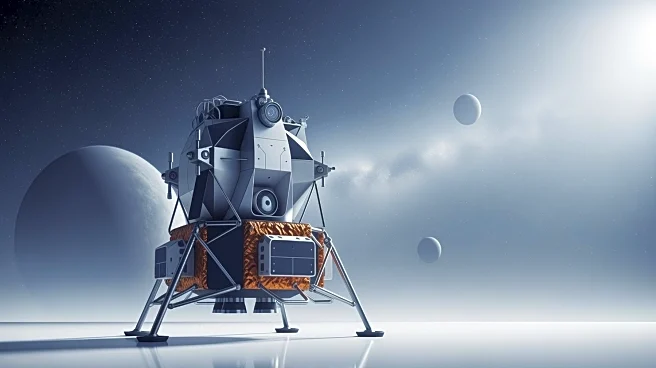What's Happening?
Recent advancements in nanopore sequencing technology have enabled the extraction and analysis of DNA from Martian surface rocks, even those exposed to gamma radiation. This method, which does not require
amplification, allows for direct quantification of nucleobases and characterization of read length distributions. The approach is being considered for NASA's Mars Sample Return missions and China's Tianwen-3 mission, aiming to detect biosignatures and assess planetary biosafety. The study demonstrates that despite radiation exposure, fragmented DNA can still be sequenced and phylogenetically assigned, offering insights into the rock's microbiome. This methodology shows promise for future in situ robotic missions to Mars and other potentially habitable extraterrestrial environments.
Why It's Important?
The ability to extract and analyze DNA from Martian rocks has significant implications for astrobiology and the search for extraterrestrial life. This technology could revolutionize life detection efforts by providing a sensitive and contamination-free method to identify biosignatures in returned Martian samples. The findings suggest that rocks on Mars may shield nucleobase polymers from radiation for over 100 million years, facilitating the investigation of extant or recently extinct life. This could lead to breakthroughs in understanding the potential for life on Mars and inform future planetary exploration missions.
What's Next?
As Mars Sample Return missions progress, the implementation of nanopore sequencing technology will be crucial for biosignature detection. Rigorous contamination control strategies and methodological refinements are necessary to enhance the reliability of DNA-based biosignature detection. Future research will focus on optimizing DNA extraction methods for ultra-low biomass environments and developing bioinformatics approaches to distinguish indigenous microbial signals from contamination. The use of Biosafety Level 4 facilities for analyzing Martian samples will ensure the highest planetary protection standards.
Beyond the Headlines
The study highlights the importance of minimizing ambient and kitome contamination to prevent false positives in life detection experiments. Maintaining ultra-cleanroom conditions and using DNA/RNA-free reagents at every stage of sample processing will be essential. The research also suggests that a correlation of the total amount of sequenced nucleobases with total organic carbon, combined with the detection of nucleotide polymers of different lengths, may serve as a potent indicator of life in oligotrophic environments like Mars.











